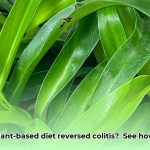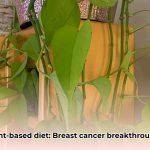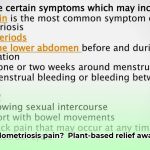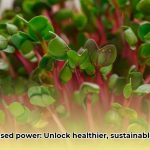Ready to embrace a plant-based diet but feeling overwhelmed by choices? This comprehensive guide provides a clear, actionable grocery list tailored for health, sustainability, and delicious meals. For more information on healthy cooking oils, check out this helpful guide on plant-based cooking oils. Ditch the confusion and embark on a flavorful, eco-conscious journey!
Sustainable Shopping: Planning is Key
Before you even think about stepping into a grocery store, take some time to plan. Thoughtful planning prevents impulse buys, minimizes food waste, and ensures you’re prepared for a week of delicious, plant-based meals.
-
Meal Planning: What recipes are you excited to try this week? Consider your schedule and how much time you’ll have for cooking. Plan for leftovers to reduce cooking time on busy days.
-
Seasonal Produce: Prioritize fruits and vegetables that are in season locally. They’re fresher, more flavorful, often more affordable, and have a smaller carbon footprint. Check your local farmers’ market or online resources to see what’s currently in season.
-
Nutritional Needs: Are you getting enough of all essential nutrients? Plant-based diets require careful attention to nutrients like vitamin B12, vitamin D, iron, calcium, and omega-3 fatty acids. We’ll cover strategies for addressing potential gaps later.
Building Your Essential Plant-Based Grocery List: A Detailed Guide
This list serves as a customizable template. Adjust quantities and choices based on your dietary needs, preferences, and the number of people you’re feeding.
Section 1: The Foundation – Fruits and Vegetables
-
Fruits: Embrace a rainbow of colors! Aim for variety to maximize nutrient intake. Buy organic when possible, especially for fruits and vegetables on the Environmental Working Group’s “Dirty Dozen” list.
- Berries: Strawberries, blueberries, raspberries, blackberries (fresh or frozen)
- Apples: Gala, Fuji, Honeycrisp
- Bananas: A great source of potassium
- Citrus Fruits: Oranges, grapefruits, lemons, limes (rich in vitamin C)
- Melons: Watermelon, cantaloupe, honeydew
- Stone Fruits: Peaches, plums, nectarines, cherries (when in season)
-
Vegetables: Load up on a variety of vegetables, both fresh and frozen. Frozen vegetables are just as nutritious as fresh and can be a convenient and economical option.
- Leafy Greens: Spinach, kale, romaine lettuce, collard greens, mustard greens, Swiss chard (packed with vitamins and minerals)
- Cruciferous Vegetables: Broccoli, cauliflower, Brussels sprouts, cabbage (known for their cancer-fighting properties)
- Root Vegetables: Carrots, sweet potatoes, beets, parsnips (excellent sources of fiber and vitamins)
- Alliums: Onions, garlic, shallots, leeks (add flavor and have health benefits)
- Bell Peppers: Red, yellow, green (high in vitamin C)
- Other Vegetables: Zucchini, eggplant, asparagus, green beans, mushrooms
Section 2: Protein and Fiber Powerhouses – Legumes, Grains, and Seeds
-
Legumes: A cornerstone of any plant-based diet, providing protein, fiber, and essential nutrients.
- Lentils: Red, green, brown, French (versatile and quick-cooking)
- Beans: Black beans, kidney beans, pinto beans, chickpeas, cannellini beans (canned or dried)
- Edamame: Shelled or in pods (a complete protein source)
-
Grains: Choose whole grains for sustained energy and fiber.
- Oats: Rolled oats, steel-cut oats (a hearty breakfast option)
- Quinoa: A complete protein source (use as a rice alternative)
- Brown Rice: Long-grain, short-grain (a staple grain)
- Whole-Wheat Pasta: Spaghetti, penne, fusilli (look for 100% whole wheat)
- Other Grains: Farro, barley, millet
-
Seeds: Often overlooked, seeds are nutritional powerhouses.
- Chia Seeds: Rich in omega-3 fatty acids and fiber (add to smoothies or oatmeal)
- Flaxseeds: Grind before using to maximize nutrient absorption (add to baked goods)
- Hemp Seeds: A complete protein source (sprinkle on salads or yogurt)
- Pumpkin Seeds (Pepitas): A good source of zinc and magnesium
- Sunflower Seeds: Rich in vitamin E
Section 3: Healthy Fats – Essential for Overall Health
-
Nuts: Choose raw, unsalted nuts whenever possible.
- Almonds: A good source of vitamin E and calcium
- Walnuts: Rich in omega-3 fatty acids
- Cashews: Creamy and versatile
- Pecans: Buttery and flavorful
-
Avocado: A creamy and delicious source of healthy fats and potassium.
-
Nut Butters: Choose natural nut butters with no added sugar or oil.
- Peanut Butter: A classic choice
- Almond Butter: A good alternative for those with peanut allergies
- Cashew Butter: A slightly sweeter option
-
Oils: Opt for healthy oils for cooking and dressings.
- Olive Oil: Extra virgin olive oil for salads and low-heat cooking
- Avocado Oil: A high-heat cooking oil
- Flaxseed Oil: Use cold for dressings (rich in omega-3s)
Section 4: Dairy Alternatives
-
Plant-Based Milks: Choose unsweetened varieties to avoid added sugars.
- Soy Milk: A good source of protein and calcium
- Almond Milk: Low in calories
- Oat Milk: Creamy and naturally sweet
- Cashew Milk: Rich and decadent
-
Plant-Based Yogurt: Look for options with added probiotics and minimal added sugar.
-
Nutritional Yeast: Adds a cheesy flavor to dishes and is a good source of B vitamins.
Section 5: Flavor Enhancers – Spices, Herbs, and Condiments
-
Spices: Stock up on a variety of spices to add depth and flavor to your meals.
- Essential Spices: Garlic powder, onion powder, paprika, cumin, chili powder, oregano, basil, thyme, rosemary, cinnamon, ginger, turmeric
-
Herbs: Fresh herbs add a vibrant touch to any dish.
- Essential Herbs: Parsley, cilantro, basil, mint
-
Condiments: Choose condiments wisely, opting for lower-sodium and lower-sugar options.
- Mustard: Dijon, yellow
- Salsa: Mild, medium, hot
- Vinegar: Balsamic, apple cider, red wine
- Tamari or Soy Sauce: Low-sodium options
- Hot Sauce: Add a kick to your meals
Section 6: Pantry Staples
-
Whole-Grain Bread: Look for breads with whole grains listed as the first ingredient.
-
Canned Tomatoes: Diced, crushed, tomato sauce (choose no-salt-added options)
-
Vegetable Broth: Low-sodium options
-
Dried Fruit: Raisins, cranberries, apricots (use in moderation due to high sugar content)
-
Dark Chocolate: 70% cacao or higher (a treat in moderation)
Sustainable Shopping Strategies: Reduce Your Impact
-
Buy in Bulk: Purchase dried beans, grains, nuts, and seeds in bulk to reduce packaging waste and save money.
-
Reduce Food Waste: Plan your meals carefully, store leftovers properly, and compost food scraps.
-
Choose Minimally Packaged Items: Opt for produce without plastic packaging whenever possible. Bring your own reusable bags and produce bags.
-
Support Local Farmers: Visit farmers’ markets to buy fresh, seasonal produce directly from local farmers.
-
Grow Your Own: Even a small herb garden can make a big difference.
Addressing Potential Nutritional Gaps: Key Nutrients for Plant-Based Diets
-
Vitamin B12: This vitamin is primarily found in animal products, so supplementation is essential for most plant-based eaters. Look for a B12 supplement or fortified foods like plant-based milk and nutritional yeast.
-
Vitamin D: Sunlight is the best source of vitamin D, but many people need to supplement, especially during winter months.
-
Iron: Plant-based iron is less easily absorbed than heme iron found in animal products. Increase absorption by consuming iron-rich foods with vitamin C. Good sources include lentils, spinach, and fortified cereals.
-
Calcium: Good sources include leafy greens, fortified plant-based milk, and tofu.
-
Omega-3 Fatty Acids: Get these essential fats from flaxseeds, chia seeds, hemp seeds, and walnuts. Consider an algae-based omega-3 supplement.
Sample Meal Ideas: A Week of Plant-Based Deliciousness
-
Breakfast: Oatmeal with berries, nuts, and seeds; Tofu scramble with vegetables; Smoothie with spinach, banana, and plant-based protein powder.
-
Lunch: Lentil soup with whole-grain bread
- Plant-based Diet Colitis Remission: Success Stories - December 18, 2025
- Plant Based Diet Breast Cancer: Research-Based Benefits - December 16, 2025
- Plant-Based Diet Ulcerative Colitis Remission: Proven Benefits - December 15, 2025










